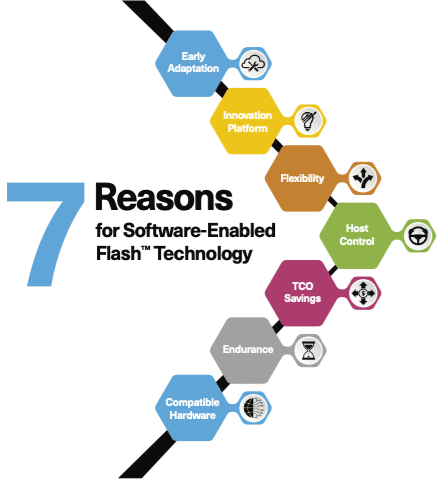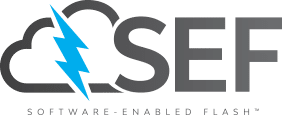KIOXIA America, supporting the Linux Foundation’s Software-Enabled Flash open source project, has announced new software-defined technology and sample hardware based on PCIe and NVMe technology. The new technology uncouples flash storage from legacy HDD protocols, allowing flash to realize its full capability and potential as a storage media.
KIOXIA will use this week’s Flash Memory Summit Conference & Expo to highlight Software-Enabled Flash, delivering the “NVMe Software-Enabled Flash Storage for Hyperscale Data Centers” session. Software-Enabled Flash technology features purpose-built, media-centric Flash hardware focused on hyperscaler requirements, with the tools for software developers to maximize the capabilities in flash storage, providing the functionality hyperscalers demand.

Cloud service providers are expanding their services to meet growing customer demand for architectures that can scale quickly and efficiently, including performance predictability and uniform behavior. Solid state storage, with its ability to quickly scale out, is becoming the dominant form of active storage used by hyperscale cloud service providers. The issue with this model is that solid-state storage (driven by flash memory) and hard drives read and write data in a fundamentally different manner, but operating systems tend to treat them the same.
Linux Foundation Software-Enabled Flash Community Project
SSDs were developed to make flash memory appear and behave like hard drives for easy customer adoption. Initially, and in normal conditions, SSDs behaving like HDDs work without noticeable performance disruptions. But at a hyperscale level, even minor disruptions can be significant and result in severe system performance degradation.

To address issues of scale-out performance, hyperscale cloud storage requires more from flash storage devices than current models operating on decades-old protocols developed for HDDs. To resolve this, the Linux Foundation’s Software-Enabled Flash Community Project will enable industry adoption of a software-defined flash API, allowing developers to customize flash storage specific to the data center, application, and workload requirements.
The project was created to benefit the storage developer community with a vendor-agnostic, flexible solution to meet the evolving requirements of the modern data center. By unlocking the full power of flash, this technology breaks free from legacy HDD protocols and creates a platform, specific to flash media in a hyperscale environment.
Eric Ries, SVP, Memory Storage Strategy Division (MSSD), KIOXIA America, Inc., put it this way:
“Software-Enabled Flash technology fundamentally redefines the relationship between the host and solid-state storage, offering our hyperscaler customers real value while enabling new markets and increasing demand for our flash solutions. By delivering the ability to flexibly deploy and manage flash-based storage and get the maximum value out of it, we are making good on our promise to improve flash efficiencies in hyperscale data centers.”
The Software-Enabled Flash Project is an open source community focused on Software-Enabled Flash (SEF) technology which supports an emerging paradigm by fundamentally redefining the relationship between the host and solid-state storage. It is a global collaboration hosted by The Linux Foundation.




 Amazon
Amazon